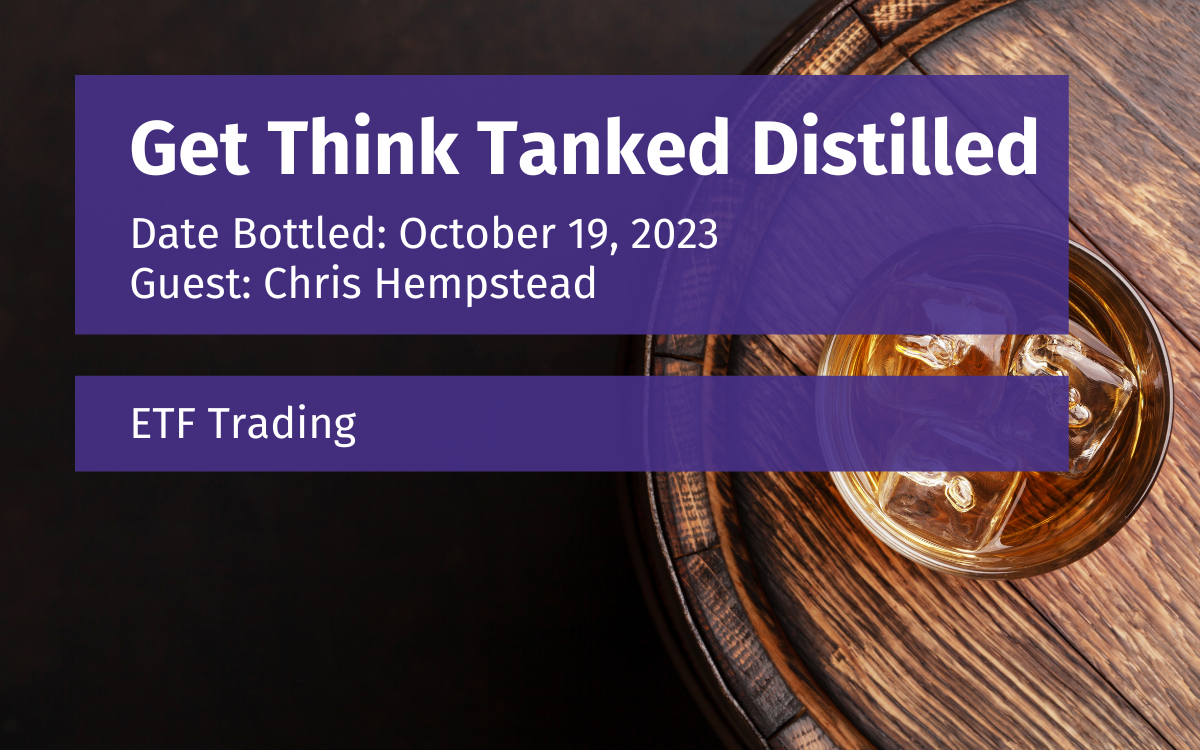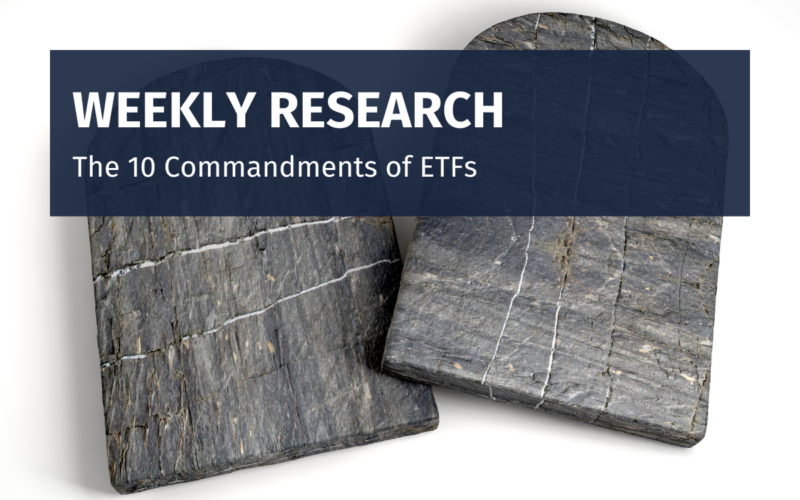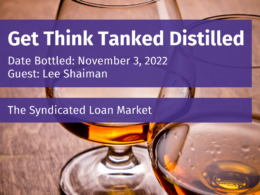A subject we don’t discuss a lot here at the ETF Think Tank is trading. We talk about ETFs, their mechanics, and how to develop trading strategies using them, but not so much about the particulars of how shares get created, purchased, and sold. Chris Hempstead works on the global trading desk at Mirae Asset Securities and has years of experience operating within this very technical environment. He joins to share his expertise and insights into how this complex market works.
Hempstead is quick to clarify that he and his company don’t get involved in the high frequency trading business. He refers to his team as “high touch traders”. By that, he means that they handle orders that aren’t necessarily in such a hurry to execute. They put thought into how to execute an order and make as little impact as possible on the benchmark itself using various hedges, for example. He does like the challenge of handling difficult trades but wants to do it in a way that is as least disruptive as possible.
Hempstead believes that his team’s strength is consuming as much data and information as possible so that it can gain high confidence going into the trading day. Since ETFs trade on the secondary market, you’re at the mercy of the quality of the market. The market environment is competitive and fair, but clients expect you to be out there. To achieve that, he’s looking for any changes in the products he trades in and making sure that things make sense. If he finds something he doesn’t expect to see, he’s on the phone looking for an explanation. That 2-hour window before the market opens is the most important time of the day.
A lot of the things that impact a security’s bid/ask spread are what you’d expect. T-bills are super liquid and trade efficiently. U.S. mega-cap stocks generally trade at very tight spreads, especially compared to international stocks. The worst case scenario if you’re looking to buy or sell an ETF is that nobody is trading it, which means you sometimes need to search for ways to make a market. Demand also has a great impact on spreads and can make them very tight when you might think they shouldn’t be. When bank loan ETFs came out around a decade ago, the creation/redemption cost difference was meaningful, but there was so much demand for shares, they were priced just above the creation price. You do occasionally find products where spreads should be, for example, 15-20 cents, but instead end up being a single penny because of high demand. The days-to-maturity options products are a good example of that today.
There are a lot of ways that investors and institutions can look to open a position in the market. Some examples include requesting a VWAP or a percentage of volume. They can spread out the trade over the course of a day. Traders can often get a lot done without impacting the market. If you’re looking to make a large trade in a security that doesn’t have a big market, the best course is to call your broker/trade desk and request that they get a quote on what you’re looking to do. It’s a bit of a newer process, but the big brokers know exactly how to do this and do it often. These processes can require a lot of manual work and commitment from the person on the other end of the trade, but it generally provides the best execution. Plus, some brokers have processes that are automated and fast.
Other key takeaways:
- An authorized participant has the license to create & redeem ETF shares directly through the trust. Market makers aren’t necessarily self-clearing. Banks may have AP agreements and allow clients to use them. APs can be market makers.
- In reality, some securities are so liquid and have so many participants that the need for a market maker is very low.
- In the ETF world, we often hear about heartbeat trades, but what exactly are they? The 40 Act ETF structure allows for in-kind receipt and delivery of securities. One manager may say they’ve got a rebalance coming up and need to make some changes. They don’t want to sell shares in the open market because they don’t want to realize the gain. The in-kind transfer allows for a delivery mechanism for shares that isn’t a trade. A participant might create shares and hold those shares for a period of time before trading them in a custom redemption. You might get one basket of securities in exchange for another basket and, in the end, the fund gets to where they want to be without the need for a distribution. The primary benefit for shareholders is that it eliminates taxable events.
- The annual data and trading platform bills at the largest firms are probably mind-bogglingly high, but they wouldn’t be paying it if they didn’t feel like they were getting value out of it. This technology investment they’re making has given the consumers the most efficient markets in the world.
- With respect to launching an ETF, cost frictions have come down significantly over the years, making them more cost efficient. It’s an interesting time because there are so many ETFs with so many different strategies coming to market. You probably need to confirm you’ll have interested parties asking for the product before launching and there’s usually timing and luck involved.
You can watch a replay of this virtual happy hour on our YouTube channel here. While there, subscribe to our channel to stay up to date on our latest content.
Disclosure
All investments involve risk, including possible loss of principal.
The material provided here is for informational purposes only and should not be considered an individualized recommendation or personalized investment advice. The investment strategies mentioned here may not be suitable for everyone. Each investor needs to review an investment strategy for his or her own particular situation before making any investment decision.
All expressions of opinion are subject to change without notice in reaction to shifting market conditions. Data contained herein from third party providers is obtained from what are considered reliable sources. However, its accuracy, completeness or reliability cannot be guaranteed.
Examples provided are for illustrative purposes only and not intended to be reflective of results you can expect to achieve.
The value of investments and the income from them can go down as well as up and investors may not get back the amounts originally invested, and can be affected by changes in interest rates, in exchange rates, general market conditions, political, social and economic developments and other variable factors. Investment involves risks including but not limited to, possible delays in payments and loss of income or capital. Neither Toroso nor any of its affiliates guarantees any rate of return or the return of capital invested. This commentary material is available for informational purposes only and nothing herein constitutes an offer to sell or a solicitation of an offer to buy any security and nothing herein should be construed as such. All investment strategies and investments involve risk of loss, including the possible loss of all amounts invested, and nothing herein should be construed as a guarantee of any specific outcome or profit. While we have gathered the information presented herein from sources that we believe to be reliable, we cannot guarantee the accuracy or completeness of the information presented and the information presented should not be relied upon as such. Any opinions expressed herein are our opinions and are current only as of the date of distribution, and are subject to change without notice. We disclaim any obligation to provide revised opinions in the event of changed circumstances.
The information in this material is confidential and proprietary and may not be used other than by the intended user. Neither Toroso or its affiliates or any of their officers or employees of Toroso accepts any liability whatsoever for any loss arising from any use of this material or its contents. This material may not be reproduced, distributed or published without prior written permission from Toroso. Distribution of this material may be restricted in certain jurisdictions. Any persons coming into possession of this material should seek advice for details of and observe such restrictions (if any).












